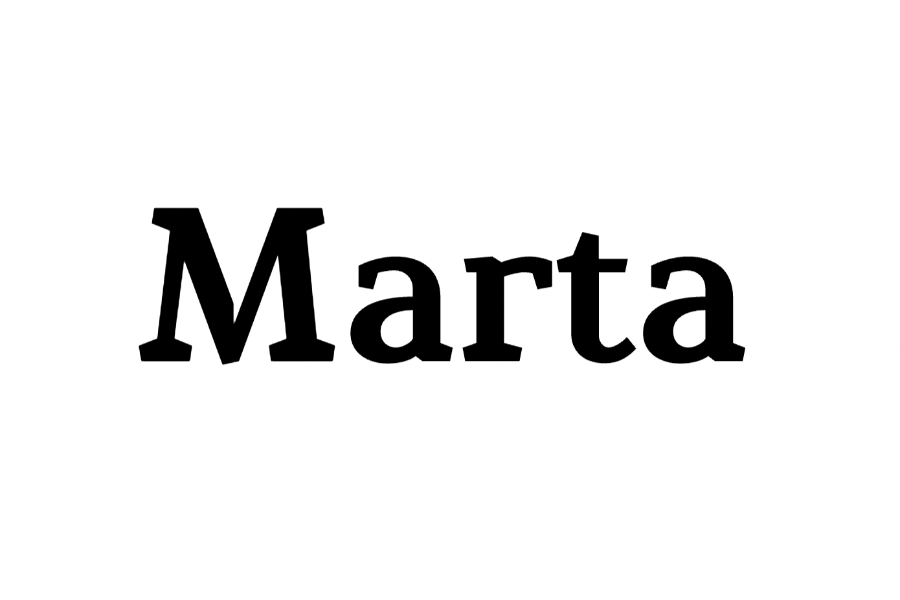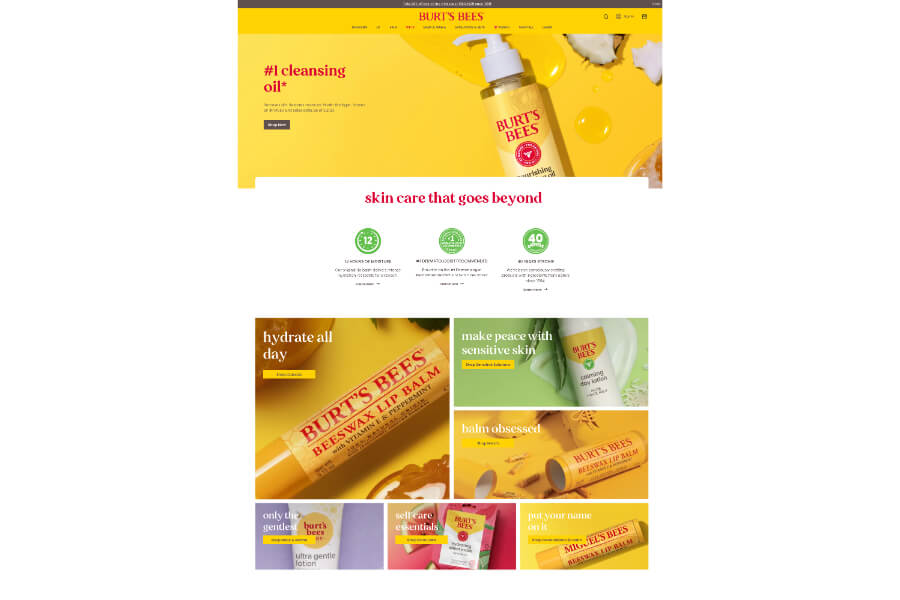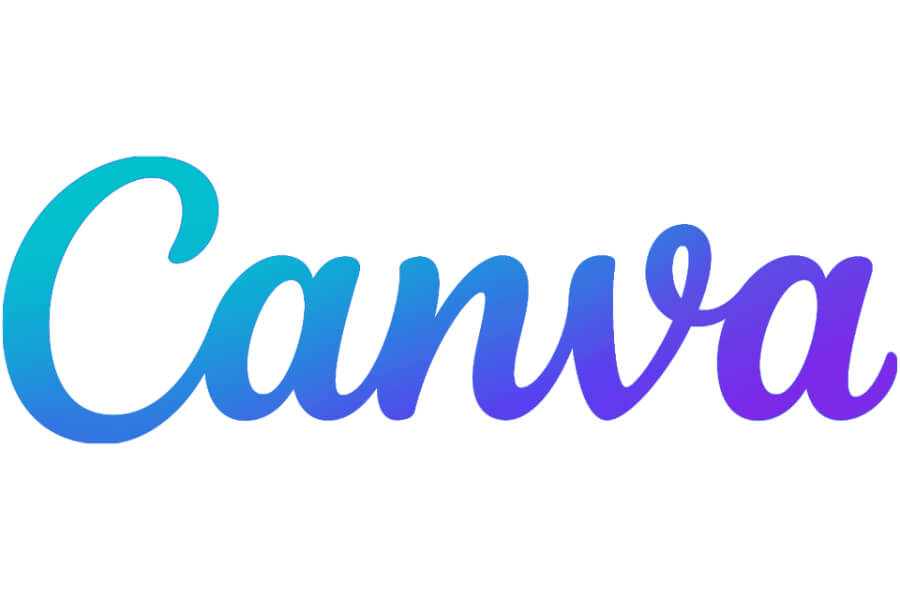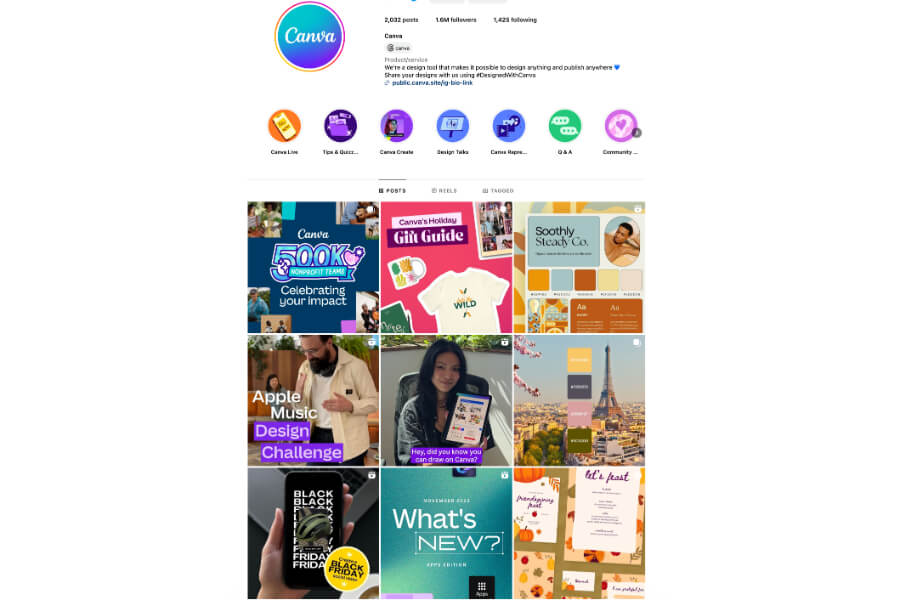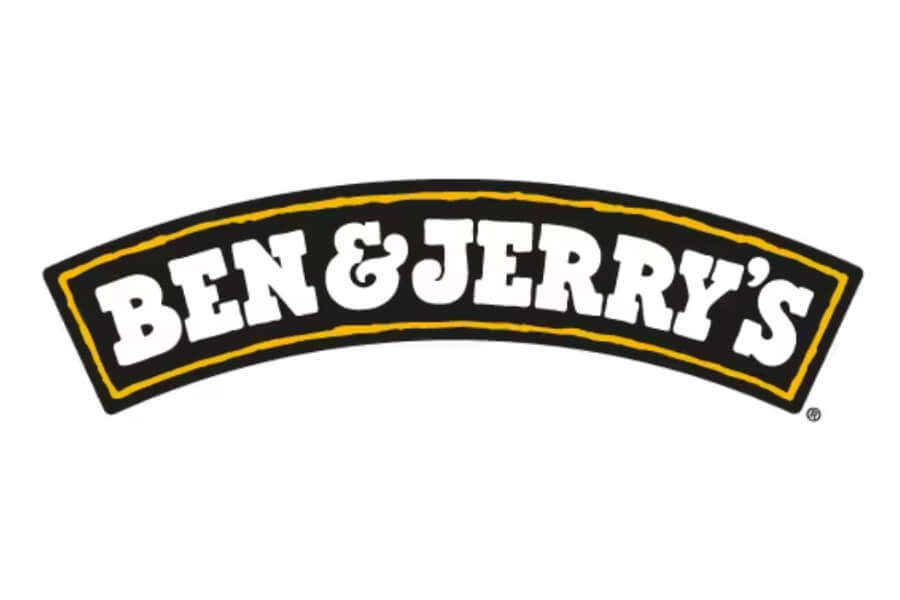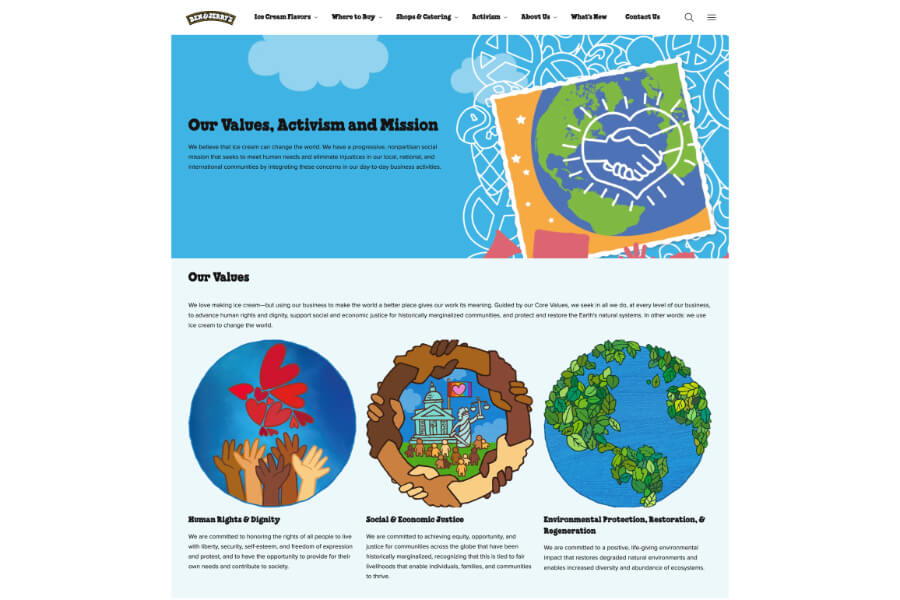In a nutshell, brand identity defines your brand to the public, and it’s the one thing that makes brands like Starbucks and McDonald’s stand the test of time. Unlike so many others, despite consumer and market changes, Starbucks stands out from other coffee shops that offer the same beverages. Brand identity is what has given McDonald’s that feeling of familiarity and reliability for nearly seven decades.
When I mentioned Starbucks just now, I wouldn’t be surprised if the green siren popped into your head. Maybe it immediately conjured an image of sleek wood-paneled coffeehouse spaces. Or perhaps when you read “McDonald’s,” golden arches, red, and yellow immediately fill your vision. It’s hard to imagine a world where these images aren’t prominent aspects of our culture.
These types of deep-seated recognition don’t just happen by accident. They’re the result of years of careful strategizing and brand-building to fully establish those businesses as not just any enterprise but as recognizable, trusted, and familiar brands in consumers’ minds.
Brand identity is a central aspect in ensuring your business’ long-term relevance—especially in today’s hyper-visual, digital-first world, even if you own a small business. However, brand identity can be complex. It isn’t just your brand logo or colors—it’s the combination of all these and more, helping you build a solid brand presence. Keep reading to learn what is brand identity and how it works, plus some successful brand identity examples.
What Is Brand Identity?
Brand identity is how your business is perceived and identified by the public. Brand identity comprises the visible elements of a company’s image. These include the images, design motifs, colors, graphics, logos, and fontography of your brand. When combined, these elements create a unique brand identity. Altogether, these elements form your brand’s unique identity.
Think back to the McDonald’s example above: Some of its most recognizable brand identity elements are its red and yellow color scheme, its iconic “M” logo, and even its mascot, Ronald McDonald. But these visual aspects of your brand identity aren’t just picked out at random. To be effective, they must be an extension of the core pillars that make up your brand: your mission statement, company vision, core values, and overall brand positioning.
Take a look at McDonald’s “Who We Are” page on its website. It clearly states that the brand’s visual identity is a result of its mission, vision, and values.

McDonald’s clearly indicates its mission and core values as the backbone of its brand. (Source: McDonald’s)
This means that when learning how to create a brand identity for your business, you’ll need to have a clear set of your principles first, then build from there. For instance, your values can guide the colors you choose based on color psychology (a practice known as brand color psychology) or the icons you choose in your logo design. All these things together create the image of your brand to the public—aka, your brand identity.
The 6 Components of Brand Identity
Now that you know the definition of brand identity, you’ll also need to know the components that make it up. There are six main brand identity elements: color scheme, font selection, design motif, imagery, logos, and brand voice. Keep reading to learn more about each.
1. Color Scheme
Recall the red and yellow color scheme from McDonald’s—it’s almost entirely associated with the brand. Other brands with just as recognizable color schemes are Coca-Cola’s red and white, or the red, yellow, green, and blue on the Google wordmark. Even sports teams are identified and represented by their colors. Research says that up to 90% of the assessments we make about brands are based on color alone.
Some examples of color psychology in branding
This is because colors are deeply tied to human emotion and psychology. For example, color theory states that blue represents trust and peace, while yellow is commonly associated with youth and happiness. The color schemes you choose for your brand identity should reflect the values, emotions, and ideas you want to associate with your brand.
2. Fonts
You probably already know that different fonts have different impacts on audiences. For instance, serif fonts, such as Times New Roman, are often seen as more traditional or vintage, while sans-serif fonts are more modern and youthful. There are thousands of fonts available, from classical to ultra-modern, and they play a relevant role in how audiences perceive your marketing messages. Take a look at some examples below.
You can even design your own font for a more custom look. Be sure to select a font that expresses your brand’s personality and fits in with the rest of your visual elements. Moreover, don’t use more than three different fonts in your branding—one for main headings, another for content text (such as blog posts), and a final one for callouts or accent texts are usually enough.
3. Design Motif
Design motifs are your brand’s overall signature styles and placements of design elements. For example, the MTV television channel has long used vibrant colors and unconventional shapes and patterns to stand out from other channels. Meanwhile, Apple incorporates drop shadows and “mirror” reflections that add depth to its gadgets’ interfaces, something not present in other tech brands.
While they can be easy to overlook, these design motifs all play a part in establishing how people perceive and remember your brand.
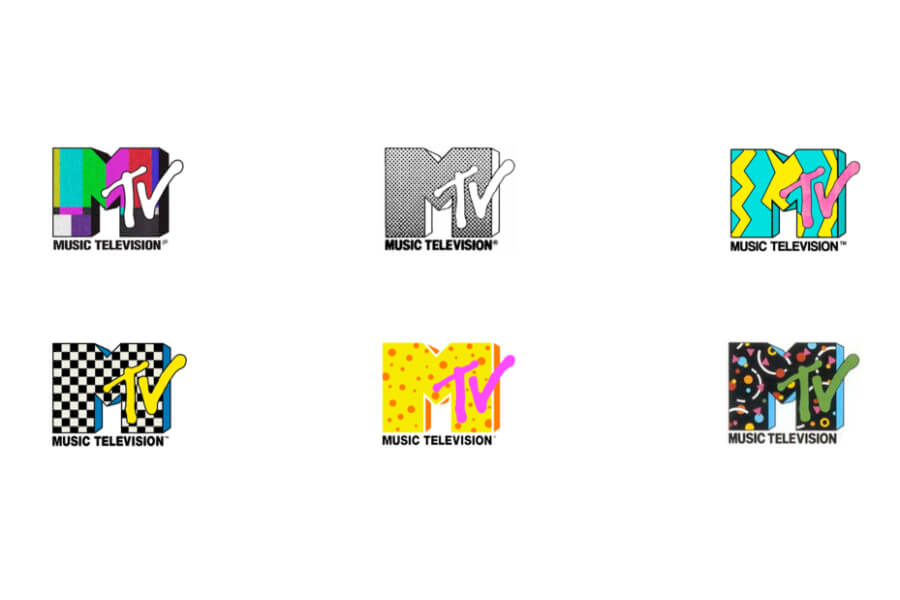
Vibrant colors and unconventional patterns have long been the MTV brand’s design motif. (Source: MTV)
4. Imagery & Illustrations
Remember Starbucks’ siren icon? It’s the most easily recognized visual element of the Starbucks brand—and yet sirens and coffee have nothing to do with each other. It’s an excellent example of using imagery and illustrations effectively when creating a brand identity. Because of Starbucks’ consistent use of the siren image through the years, it’s since become synonymous with the brand.

There are few more iconic and universally recognized brand illustrations than the Starbucks siren. (Source: Starbucks)
Ultimately, the best and most well-designed brand identities can rely on images and illustrations that fall within a unified theme. For example, Starbucks doesn’t even need its wordmark in its logo anymore—its siren image is well-recognized enough. Other examples of brands with successful brand imagery are Disney’s famous castle silhouette and the WWF panda. These brands have successfully attached their identity to a recognizable image.
5. Logo
Your brand logo is a key aspect of your brand image identity. For small businesses, it is the most important aspect. This is because logos are the main visual representation of your business to the public, encapsulating everything from your business name to your products or services to your values and personality. Marketing-wise, your logo will likely be the first point of contact most people will have with your business, so it needs to give an accurate impression.

The Fit Small Business logo clearly communicates what the site is about in an easy-to-understand way.
As with all the other brand identity design elements, all of these aspects of your business need to be taken into account when designing your logo. A simple, easy-to-understand logo is far more effective than a complex and fancy one that no one can comprehend.
Pro tip: Creating an effective logo doesn’t need to be too complicated—several logo design platforms make it easy for anyone to create a market-ready business logo. Or, you can hire a graphic designer via sites like Fiverr to create a fully custom logo for you for less than $100. Check out our Fiverr review to see if it’s a good fit for your business needs.
6. Brand Voice
Your brand identity also includes your brand’s language and voice when communicating with the public. For instance, in your marketing copies, do you use casual language and a friendly tone or a more serious, business-like approach? These decisions affect the way audiences view your brand. Developing your brand voice is also an important part of your brand identity because communicating with people regularly is integral to marketing your brand.
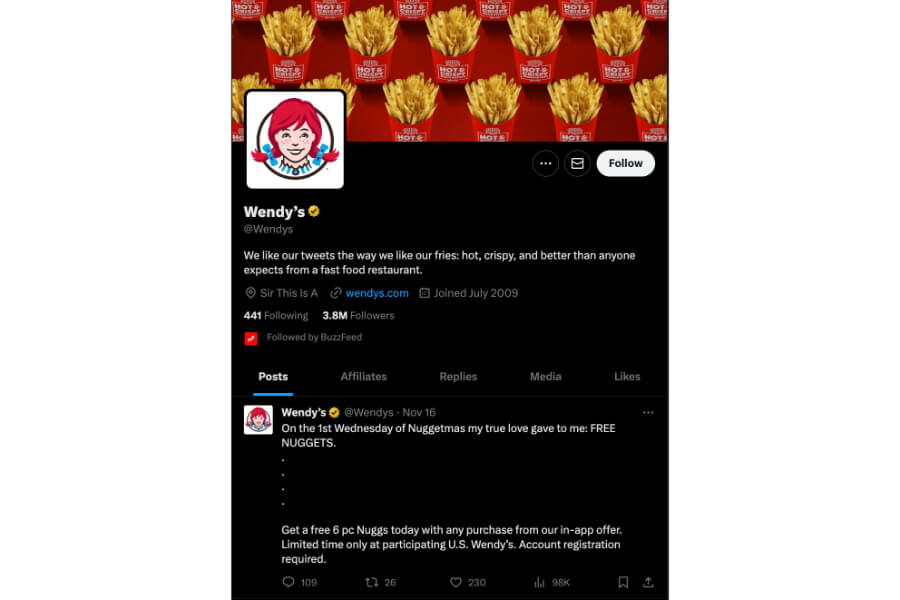
An example of a brand with an easily identifiable brand voice is Wendy’s—they often inject humor and snark into their marketing. (Source: Twitter)
Your brand voice and language will be applied to everything from your email reachouts to your social media captions. Therefore, it’s essential that it’s consistent, recognizable, and in line with the core pillars of your brand (mission, vision, values, and brand positioning). One key place you can hone and convey your voice is when writing your brand story.
Did you know? Having a consistent brand can increase revenue by up to 20%. Find out more on all things branding in our list of branding statistics.
When taken together, these elements are what collectively define brand identity for a business. However, while these are the elements that are visible to the public, they’re all shaped and guided by your company’s internal mission, vision, and core values—both individually and as a whole. When audiences see your branded assets, they should immediately get a sense of what your company does and stands for.
How Brand Identity Works
You may be wondering why brand identity is even important at all to your small business and what it has to do with generating revenue. But your brand identity is much more than just your business’ public image—it reflects your business’ unique character and individuality, and what differentiates it from other businesses in your industry.
For example, no two cafes on the same street are identical because they each have their own values and goals that set them apart. Therefore, they’ll each have a separate brand identity shaped by these principles. They’ll have different logos, color schemes, and brand voices, and will be perceived differently by the public.
Your brand identity is rooted in the most internal and core characteristics of your business: what it stands for and what it aims to do. It’s the visible and visual representation of all these ideals that guide your business’ creative and marketing decisions. Here are the ways that brand identity affects the various facets of your marketing.
Your brand identity is intrinsic to your internal marketing. It’s what helps your employees have a clear understanding and appreciation of your business and, therefore, become more effective team members. Brand identity in internal marketing primarily involves promoting your business’ mission, vision, and values among your team members via training, employee-focused programs, and overall company culture.

Marketing your brand identity internally can involve promoting your core values through employee trainings. (Source: LinkedIn)
You can think of your employees as the first audiences of your brand’s marketing strategies. If your team members understand what makes your business unique and special, it’s much easier for them to share those experiences with external audiences as well. Effective internal marketing can even turn your employees into brand advocates.
Most of digital marketing is visual—from digital ads to social media posts to video marketing. It’s also highly populated with lots of competition, which is why your brand identity is essential to differentiate your business from countless others in your field. The elements of your brand identity, such as your logo, design motifs, and brand voice, are what audiences will recognize first from your brand.
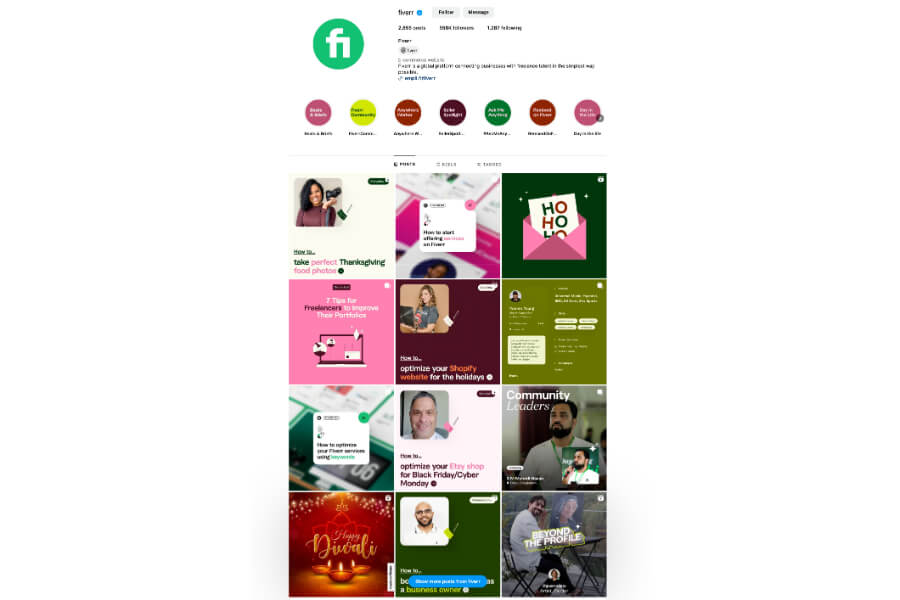
Fiverr’s distinct brand identity makes all its social media content look cohesive. (Source: Instagram)
Your brand identity can (and should) impact all aspects of your digital marketing. Incorporate your brand’s logo and design motifs in your social media images, and use your brand voice and fonts in your email marketing, social media, and blogs. Using your brand identity in all your online marketing helps you build a strong and cohesive online brand presence.
Pro tip: Your business’ website is your most important digital marketing asset—and it’s important that it promotes your brand identity. The good news is that building a branded website isn’t impossible, even with limited experience. We’ve rounded up a list of the best website builders for small businesses that help you build a fully branded website easily.
Your offline marketing will primarily consist of printed marketing materials like posters and brochures, print advertising, billboards, direct mail promotions, business cards, and business events. As with online marketing, using your brand identity in offline marketing tactics builds your brand recognition and sets you apart from other small businesses in your local area.
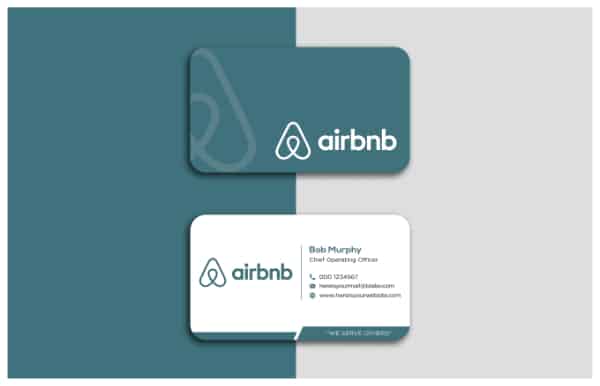
Branded marketing materials—such as this business card—are far more effective than plain unbranded ones. (Source: Fiverr)
Your brand identity also helps your marketing assets be more noticeable—for instance, a branded flyer is more likely to catch a passerby’s attention than a regular plain one. It’s also important because much of offline marketing hinges on circumstance—or example, people driving by your billboard or chancing upon your newspaper ad. You want to be sure that people see and remember your brand in that small time frame.
Broadcast marketing is another way to get your business in front of large audiences in a specific area, for example, via local TV or radio stations. However, broadcast marketing is only the most effective in promoting brand awareness (not for engagement or conversions). Therefore, brand identity is everything in broadcast marketing.
In TV advertising, your television commercials need to clearly indicate your brand through visuals and storytelling. Meanwhile, for radio ads, your brand identity can be expressed through your script’s tone, language, and concept.
Pro tip: Interested in learning more about broadcast marketing for your small business? Read our small business guides to radio advertising and television commercials.
The examples above all prove that having brand identity guidelines is necessary to grow your business today. Whichever strategy you focus your marketing efforts on, having a well-defined brand identity template guides all your decisions and ensures that you have a strong and consistent brand presence to the public. This sets your business up for long-term success and eventually builds a stronger and more loyal customer base in the long run.
3 Brand Identity Examples That Work
Building a brand identity can seem daunting, but it really only comes down to having an in-depth understanding of what makes your business unique and how it’s relevant to your target audience. The best and most recognizable brands have a simple, clear, and straight-to-the-point brand identity. To help you get started, take some inspiration from some of the best brand identity examples below and why they work.
Example #1: Burt’s Bees
Burt’s Bees is one of the most unique brand identity examples—and, therefore, one of the most effective. As a cosmetics and wellness brand, Burt’s Bees has thousands of competitors in its industry, yet it immediately stands out from the crowd—all thanks to its unique brand identity. Whereas other cosmetic brands usually go for high-shine, modern branding, Burt’s Bees uses a more rustic and organic look and feel with vintage logos, illustrations, and design motifs.
What particularly makes this approach work is that the Burt’s Bees brand identity is anchored to its core values of using natural, organic, and sustainable ingredients. This central mission comes through all the brand’s marketing efforts, eventually building a loyal consumer base.
Example #2: Canva
One of the most memorable brand identity examples from tech startups is Canva. As an online creative design platform, Canva’s mission as a company is to empower the world to design, and this shines through in all its marketing assets, from its website to its social media pages and digital ads. While Canva uses several types of content in its marketing, they all still feel coherent and unified because of the strong Canva branding throughout.
For instance, the blue and purple color scheme of Canva’s logo appears throughout its website, while its signature sans serif font and design illustrations make the brand easily recognizable on social media.
Example #3: Ben & Jerry’s
Ben & Jerry’s is an ice cream brand, but it’s also one of the best values-led brand identity examples today. Ben & Jerry’s has always been led by its core mission and values of social equality and human rights, which it consistently promotes in all its marketing collateral. On its website, it has a dedicated section for its activism efforts, and it consistently uses inclusive language in its brand voice, even often taking stands on current issues.
Visually, Ben & Jerry’s has a distinct brand identity design. The font in its logo is also used in blog headings and social media images, and it uses the same style of colorful illustrations across all its marketing assets. These strategies give Ben & Jerry’s the unique brand identity it has today, eventually building it a steady following.
Frequently Asked Questions (FAQs)
The key components of brand identity are the brand logo, color scheme, fonts, design motif, imagery and illustrations, and brand voice. When combined, they form your business’ brand identity, which is how public audiences perceive your business. These components are shaped by your brand mission, vision, and values, and are used across marketing materials such as your business website, social media posts, and advertisements.
To build a good brand identity, you’ll first need to have a deep understanding of your company, what makes it unique, and its mission, vision, and values. Then, use these ideas and principles to shape your business’ brand identity elements: its brand logo, color schemes, fonts, design motif, imagery, and brand voice. Then, apply these elements across all your internal and external marketing materials to build a strong brand presence.
Yes, brand identity is important because it defines your brand to the public. It’s what differentiates your business from others in the same industry and location, and it’s what helps audiences recognize and identify with your business. Ultimately, your brand identity is what helps you build a strong brand presence for your business.
Bottom Line
If you want your small business to succeed in today’s competitive market, you’ll need to develop its brand identity. Your brand identity helps you stand out among the competition and connect with the audience you need. Knowing what is brand identity and what its elements are will help you get started on the right track. With consistent effort, building your brand identity will eventually strengthen your business’ brand presence in the long term.
